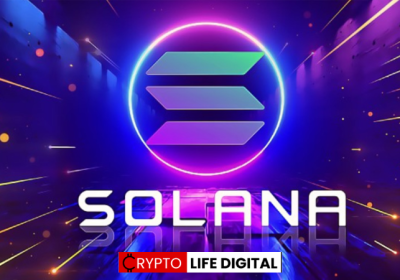The Latest Version of The Geth Standalone Clients Is Now Available: Go Ethereum

In the quest to control the amount of energy used in the mining of Ethereum, a few days ago, the merge was launched in the ecosystem. Although, migrating to Ethereum 2.0 under the PoS mechanism has been a serious issue for the Ethereum developers.
Go Ethereum, one of the three original implementations of the Ethereum protocol, has announced that the latest version of the Geth standalone client is now available. Geth v1.10.19, also known as Camaron, is a feature release that contains a definition for the Gray Glacier fork.
Gray Glacier fork is a difficulty-bomb postponement, which is expected to go live on Ethereum Mainnet towards the end of June.
Facts About Difficulty Bomb
- Ethereum is a cryptocurrency network that, like others, depends on a consensus mechanism that uses large amounts of energy and computational power. This enhances scalability and centralization of the technology into large mining farms fabricated by people or businesses with significant assets. However, this centralization goes against the original tenets behind cryptocurrency.
- Ethereum’s “difficulty bomb” refers to the intentional and sudden spike in mining difficulty that will occur when ETH 2.0 and proof-of-work are launched to the Ethereum network. The plan behind this difficulty bomb is to exponentially increase the number of time it takes to mine a new block on the Ethereum blockchain so that it:
- Encourages cryptocurrency miners to move away from energy-intensive proof-of-work mining by removing the incentive
- Takes away the ability to centralize currency creation and ownership
- Discourages blockchain forks
- Forces node upgrades
The brain behind the Difficulty Bomb
Ethereum’s difficulty bomb is a setup to distract miners, who may prefer to continue with the PoW mechanism even after the blockchain transitions to PoS. The primary reason miners won’t want to switch will most likely be resistance to a reduction in profits. If all miners do not switch to proof-of-stake, then there is a possibility that Ethereum’s blockchain might fork. It will increase the time it takes to mine new blocks, encouraging miners to move to the less energy-intensive proof-of-stake mechanism.
As stated above concerning migrating the Ethereum developers which may not be easy, every feature update of the Ethereum ecosystem, including protocols like geth, always contains a difficulty bomb postponement.
In the latest version of Geth, Gray Glacier is expected to delay the difficulty bomb by an additional 700,000 blocks, which should span till the middle of September 2022. Users of Go Ethereum have been told to switch to the new version before the Gray Glacier hardfork starts at block number 15050000.
Read Also: The Community applauded Ripple’s And Binance’s Announcement of a Job Interview Amid of Bear Market
The developers also noted that specific changes found in v1.10.19 might cause incompatibility issues. Like:
- The engine API is now only available with JWT authentication.
- Geth will refuse to start if legacy receipts are present in the database. The check can be disabled with –ignore-legacy-receipts, but we strongly recommend you run the conversion in this case (#24943).
- The RPC method debug_traceCall will now reject execution against the pending block (#24871).
- RPC timer metrics have been changed into histograms (#25044).
And some other changes may include Updates related to The Merge on Ropsten, which is now a proof-of-stake network.
Geth’s latest release is part of the interconnected protocol upgrades meant to make the Ethereum network more scalable, secure, and sustainable.

Cryptolifedigital is a cryptocurrency blogger and analyst known for providing insightful analysis and commentary on the ever-changing digital currency landscape. With a keen eye for market trends and a deep understanding of blockchain technology, Cryptolifedigital helps readers navigate the complexities of the crypto world, making informed investment decisions. Whether you’re a seasoned investor or just starting out, Cryptolifedigital’s analysis offers valuable insights into the world of cryptocurrency.










